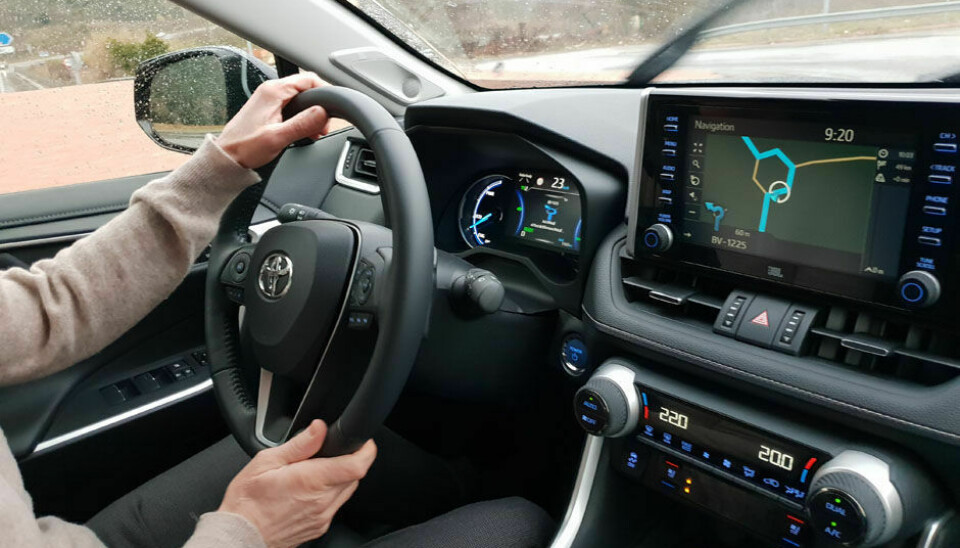
In the dynamic landscape of automotive safety technology, Toyota’s Vehicle Stability Control (VSC) stands as a pivotal innovation, embodying the brand’s unwavering commitment to driver safety and vehicular reliability. As road conditions and driving scenarios become increasingly unpredictable, Toyota’s VSC emerges as a critical safety net, designed to enhance vehicle handling and prevent potential accidents. This comprehensive exploration delves into the essence of Toyota’s Vehicle Stability Control, providing insights into its functionality, benefits, and the underlying technology that cements Toyota’s reputation as a leader in automotive safety advancements.
Visit: https://cedricthecarguy.com/what-is-toyotas-vehicle-stability-control-vsc/ for more details
The Genesis of Vehicle Stability Control
At its core, Vehicle Stability Control is an advanced active safety system integrated into the fabric of Toyota’s vehicle lineup. Conceived as a response to the challenges of maintaining vehicle stability in adverse driving conditions—such as slippery roads, sudden swerves, and sharp turns—VSC represents a leap forward in the evolution of driving safety. It’s a system that intelligently combines traction control and anti-lock braking systems to offer unparalleled stability across a spectrum of driving conditions, ensuring that Toyota drivers have the utmost confidence behind the wheel.
Understanding How VSC Operates
The operational mechanics of Toyota’s Vehicle Stability Control system are a testament to the brand’s innovative prowess. VSC continuously monitors the vehicle’s speed, steering angle, and yaw rate—the rate at which the vehicle rotates around its vertical axis. Here’s a breakdown of how VSC functions to maintain vehicular stability:
- Sensory Detection: Utilizing an array of sensors, VSC detects any deviation from the driver’s intended path, such as understeer or oversteer, which can lead to loss of vehicle control.
- Selective Braking: Upon detecting instability, VSC selectively applies the brakes to specific wheels, counteracting the detected slippage and helping to realign the vehicle with the driver’s intended course.
- Engine Power Adjustment: Simultaneously, VSC can reduce engine power to further aid in stabilizing the vehicle’s trajectory.
- Integrated Functionality: VSC operates in concert with the vehicle’s other safety systems, such as Anti-lock Braking System (ABS) and Traction Control (TRAC), creating a cohesive safety network that adapts to changing driving dynamics in real time.
The Multifaceted Benefits of VSC
The implementation of Vehicle Stability Control in Toyota vehicles brings a multitude of benefits, emphasizing safety, performance, and peace of mind:
- Enhanced Safety: VSC significantly reduces the risk of accidents resulting from vehicle skidding, particularly in challenging weather conditions or emergency maneuvers.
- Driver Confidence: Knowing that VSC is actively working to maintain stability, drivers can feel more confident and secure, even in less-than-ideal driving conditions.
- Superior Handling: VSC improves vehicle handling, ensuring a smoother and more controlled driving experience.
- Preventive Protection: By preventing loss of control before it happens, VSC acts as a preemptive measure, safeguarding against potential collisions.
Navigating VSC: Tips for Maximizing Effectiveness
To harness the full potential of Toyota’s Vehicle Stability Control, consider the following best practices:
- Familiarization: Understand the specific functionalities and limitations of VSC in your Toyota model by consulting the owner’s manual.
- Regular Maintenance: Ensure that your vehicle’s sensors and braking system are regularly inspected and maintained to keep VSC functioning optimally.
- Mindful Driving: While VSC provides an added layer of safety, it’s not a substitute for careful driving. Always adapt your driving to road conditions, weather, and traffic.
- System Awareness: Be aware of VSC activation, typically indicated by a flashing light on the dashboard, and respond accordingly by moderating your speed and steering to regain control.
The Road Ahead with Toyota’s VSC
As automotive technology continues to advance, Toyota’s commitment to safety remains steadfast, with Vehicle Stability Control serving as a cornerstone of this commitment. Future iterations of VSC are expected to incorporate even more sophisticated sensors, artificial intelligence algorithms, and integration with autonomous driving technologies, further enhancing vehicle stability and driver safety.
Conclusion
Toyota’s Vehicle Stability Control system is more than just a feature; it’s a reflection of the brand’s holistic approach to safety and innovation. By intelligently integrating advanced sensors, selective braking, and engine power adjustments, VSC provides Toyota drivers with an invaluable tool for navigating the uncertainties of the road. As we look towards the future of automotive safety, Toyota’s VSC stands as a testament to the brand’s dedication to not only meeting but exceeding the safety expectations of drivers worldwide. In the journey of automotive evolution, Toyota’s Vehicle Stability Control is not just about maintaining stability—it’s about setting the standard for safety in motion.


